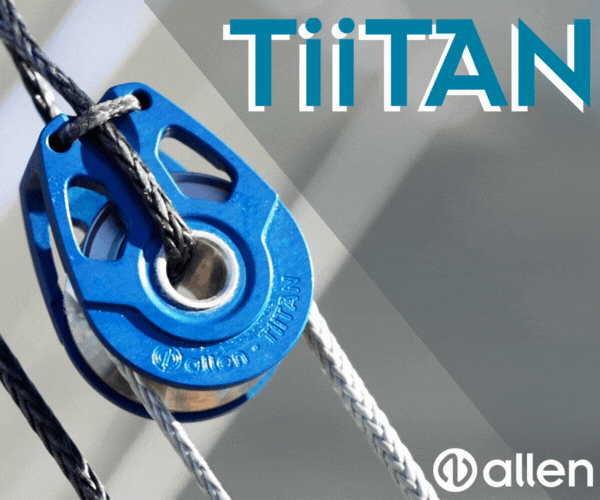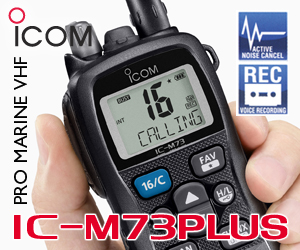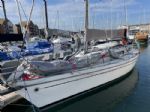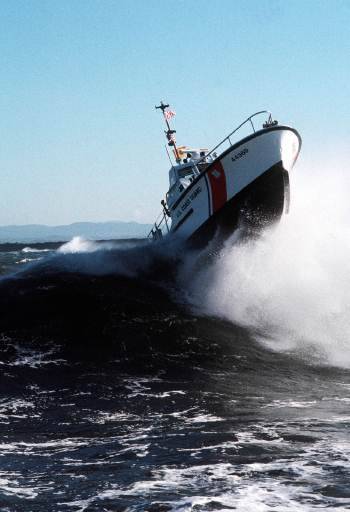












| Laser 28 - Excellent example of this great design Hamble le rice |
 |
| Rossiter Pintail Mortagne sur Gironde, near Bordeaux |
 |
| Laser 140101 Tynemouth |
 |
List classes of boat for sale |
More Speed Bumps |
Post Reply 
|
Page 12> |
| Author | |
Oatsandbeans 
Far too distracted from work 
Joined: 19 Sep 05 Location: United Kingdom Online Status: Offline Posts: 382 |
 Post Options Post Options
 Quote Quote  Reply Reply
 Topic: More Speed Bumps Topic: More Speed BumpsPosted: 26 Sep 05 at 9:53am |
|
Well Guys thanks for the great input. I suppose summing it all up was- all the fast sailors do it, and Jim Saltonstal (bless his heart) says you should do it then it must be right. Unfortunately that doesnb't do it for me, let nme try to explain it another way. OK so we have our mainsail if you consider the loadpaths we have loads coming from the head and the clew taking the major wind loads - (you can see how these genrally run by looking at a high tech offshore sail). Now what is happening in the area of the bumps that come out from the luff. Well the sail here has no load runing vertically it is actually in compression here that why its all bunched up. As we try to put in a tensile load into this area by applying cunningham we cant as all we do is remove the wrinkles. Now once we have continued to apply cunningham we can put a tensile load in the sail cloth and what does this do, it starts to take load away from the load that was going from the head to the clew and bingo the leech frees. It also moves the draught forwards (as it applies a tensile force perpendiclar to the mast). So in summary lets try and have a bit of scientific analysis on this rather than the bland comments that we have had of - it's in the latest manual or so and so's tunning guide so it must be right. If we all thought like that we'd still be sailing aroung with bendy booms (remember those in the 60&70s), and really upright rigs (no one would ever had found out what happens to a boat when you rake the rig back- thanks to David Barnes NZ 470 world champ numerous times, I bet he didn't find that in a tunning guide!) |
|
 |
|
jeffers 
Really should get out more 

Joined: 29 Mar 04 Location: United Kingdom Online Status: Offline Posts: 3048 |
 Post Options Post Options
 Quote Quote  Reply Reply
 Posted: 26 Sep 05 at 10:17am Posted: 26 Sep 05 at 10:17am |
|
Hence my experience of having done it by trial and error.
I would add that there is 1 guy in our fleet who has been national champion in a different class several times. He swears by yanking everything on hard in all conditions and he still goes fast (but his sail is very old, I would be surprised if he goes quite so well doing this with a new sail). I do not have a scientists understanding of the effects of wind flow, I just go by what I see which is that those with 'wrinkles' in the luff of their sails in light airs go much better than those whose pull their cunninghams on (in most cases). Also those who set their outhaul for the wind conditions will go better in the changing conditions (as we had Yesterday). Just my experience, find whatever works for you and use it. When I tack my Laser I change hands behind my back as I go across. I find that I cannot do the sit on the tiller then swap hands business, I get in a terrible knot! Paul |
|
|
Paul
---------------------- D-Zero GBR 74 |
|
 |
|
Tornado_ALIVE 
Really should get out more 

Joined: 07 Nov 04 Location: Australia Online Status: Offline Posts: 611 |
 Post Options Post Options
 Quote Quote  Reply Reply
 Posted: 26 Sep 05 at 10:20am Posted: 26 Sep 05 at 10:20am |
|
Hi Mate, I thought my comments made a bit of sense. See below. If there is no load on the sail when the wrinkles are just pulled out, then why would the sail spring back up when you release it from that point ???????
|
|
 |
|
jeffers 
Really should get out more 

Joined: 29 Mar 04 Location: United Kingdom Online Status: Offline Posts: 3048 |
 Post Options Post Options
 Quote Quote  Reply Reply
 Posted: 26 Sep 05 at 11:23am Posted: 26 Sep 05 at 11:23am |
|
Good point Stephen...but I find that you can never be sure that you have released the cunnigham completely unless you have the wrinkles...
Also see this: http://www.yachtsandyachting.com/photos/?s=65&PID=4& boat=finn&club=Moscow&clss=&desc=Gold%20Cup& photographer=&yr=2005 A 4 time world champion, double olympic gold medalist and the force that has dominated the Finn class can't be wrong surely? He is even using a 'film' sail as opposed to dcaron (which are much less prone to 'speed bumps' I am told... Regards, Paul |
|
|
Paul
---------------------- D-Zero GBR 74 |
|
 |
|
Guest 
Newbie 
Joined: 21 May 04 Location: United Kingdom Online Status: Offline Posts: 0 |
 Post Options Post Options
 Quote Quote  Reply Reply
 Posted: 26 Sep 05 at 12:33pm Posted: 26 Sep 05 at 12:33pm |
|
The great thing about our sport is that you don't have to follow the crowd ... If you think this is the way to go then just do it ... My general approach to sailing has always been to copy the top guys; once your amongst the top guys that is the time to start developing different ideas. So many mid fleet sailors try and get to the top by doing somthing different ... why not get as good as the best then get better through your own innovations? The guys at the font probably know a thing or two so go with conventional wisdom first ... There are no quick wins in this sport - get as good as the top guys THEN get better; if you spend too long looking for a short cut to success you will be mid fleet for ever. Of course is you analysed your own performance as much as you do the bumps on your sail I am sure you'd improve faster than any change to sail set ... Rick |
|
 |
|
jeffers 
Really should get out more 

Joined: 29 Mar 04 Location: United Kingdom Online Status: Offline Posts: 3048 |
 Post Options Post Options
 Quote Quote  Reply Reply
 Posted: 26 Sep 05 at 2:25pm Posted: 26 Sep 05 at 2:25pm |
I couldn't have said it better myself. It has taken me 6 years to get to where I am within my club (from pretty much a complete novice). I am always trying something new or different to the crowd, sometimes it works, sometimes it doesn't work. It is just a case of finding out what. Adam Bowers recommend that you buy a book and record every sailing outing including rig, sail, trim and balance settings so you can look back and see what was good and what was bad.... I find with a simple boat like a Laser you don't really need to do that but is a more complicated boat I can see what that would be useful. Above all don't every forget that sailing should be fun.....spend more time on the water enjoying the feeling! Regards, Paul |
|
|
Paul
---------------------- D-Zero GBR 74 |
|
 |
|
Guest 
Newbie 
Joined: 21 May 04 Location: United Kingdom Online Status: Offline Posts: 0 |
 Post Options Post Options
 Quote Quote  Reply Reply
 Posted: 26 Sep 05 at 3:49pm Posted: 26 Sep 05 at 3:49pm |
|
My general experience is people fixate on the boat rather than their own performance. When I watch other people the boats are similar but the sailors are very different and it's the rubbery link between the tiller, mainsheet and hull that make the biggest difference. So if you are going to keep a log record how well you started; did you spot the shifts and gusts, did you capitalise on the tide and did you sail the boat flat. If you have got all that right then you have probably won anyway ... |
|
 |
|
Stefan Lloyd 
Really should get out more 
Joined: 03 Aug 04 Online Status: Offline Posts: 1599 |
 Post Options Post Options
 Quote Quote  Reply Reply
 Posted: 26 Sep 05 at 3:55pm Posted: 26 Sep 05 at 3:55pm |
|
Q: What is the most important piece of equipment to get right on a boat? A: The nut on the end of the tiller. (Apologies to crew who are also important.) |
|
 |
|
ssailor 
Far too distracted from work 
Joined: 11 Oct 04 Location: United Kingdom Online Status: Offline Posts: 430 |
 Post Options Post Options
 Quote Quote  Reply Reply
 Posted: 26 Sep 05 at 4:49pm Posted: 26 Sep 05 at 4:49pm |
|
These are speed bumps
 |
|
|
Any one in need of quality carbon fibre work (tillers etc) at decent prices!
Int 14 Gbr 1244 'Nucking Futs' The New Port rule!!. |
|
 |
|
49erGBR735HSC 
Really should get out more 

Joined: 30 Mar 05 Location: United Kingdom Online Status: Offline Posts: 1991 |
 Post Options Post Options
 Quote Quote  Reply Reply
 Posted: 26 Sep 05 at 5:06pm Posted: 26 Sep 05 at 5:06pm |
|
In the lighter days when the wrinkles are most apparent on the sails in the lower regions, my personal point of view is that I wouldn't apply cunnigham to get rid of the wrinkles. As you rise up from the lower part of the sail, the pressure over the sail increases with height. The head of the sail, and the tip of the mast is the area which has most pressure over it and it decreases as you move down the sail. By applying cunnignham, you are reducing power maintained by the mid to higher regions of the sail which is the area which will have most pressure over it. The lower regions of the sail don't maintain too much power on the lighter days, so by concentrating on that area, you are sacrificing boat performance. There are diagrams in Frank Bethwhaites High performance sailing which support this theory. When we're sailing the 49er, we only start pulling cunningham on to seriously depower the boat in above 16knots but we don't have to worry about wrinkles in our sail plan. We also used to leave the wrinkles in our Laser 2 sails because the boat felt slower when we jammed every thing on tight. Same for the 505s too.
|
|
 |
|
Post Reply 
|
Page 12> |
| Forum Jump | Forum Permissions  You cannot post new topics in this forum You cannot reply to topics in this forum You cannot delete your posts in this forum You cannot edit your posts in this forum You cannot create polls in this forum You cannot vote in polls in this forum |
Copyright ©2001-2010 Web Wiz
Change your personal settings, or read our privacy policy











 Printable Version
Printable Version Delicious
Delicious Digg
Digg Facebook
Facebook Furl
Furl Google
Google MySpace
MySpace Newsvine
Newsvine reddit
reddit StumbleUpon
StumbleUpon Twitter
Twitter Windows Live
Windows Live Yahoo Bookmarks
Yahoo Bookmarks Topic Options
Topic Options